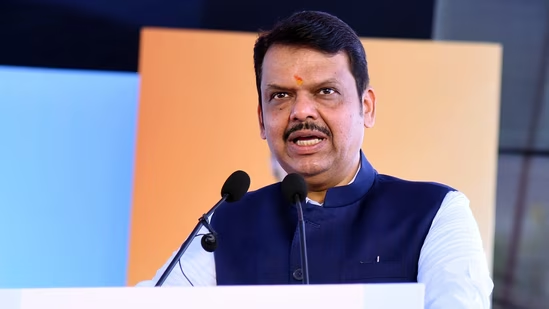Discover how collaboration between India and global powers, including China, can address climate change and foster economic growth. Learn about strategic policies for sustainable development.
Sweltering through last month’s heatwave in northern India, many might assume that the worst impacts of climate change have arrived. However, the reality is far grimmer. A recent report from the National Bureau of Economic Research (NBER), highlighted in an editorial by the Business Standard, forecasts climate change damages to be six times larger than previously estimated. Specifically, a 3°C rise in average global temperature by 2100, as projected by the United Nations Environment Programme in its 2023 Emissions Gap Report, could slash global output by 36%, even if all nations fully implement their climate mitigation commitments. Countries in the tropics and subtropics, such as India, would be severely affected, with the general population potentially being 50% poorer by 2100 than they would otherwise be. This bleak outlook further complicates India’s ambition to achieve “Viksit Bharat 2047.”
The Urgency for Global Collaboration
Such dire predictions logically call for a unified global effort, harnessing both scientific and financial resources to combat this existential threat. Yet collective action is notoriously difficult, particularly when the costs are immediate while the benefits are deferred. This has historically led to slow and inconsistent global cooperation on climate mitigation. Recent geopolitical tensions, such as conflicts in Europe and the Middle East and the escalating US-China rivalry, have further hampered these efforts.
China’s Scientific and Technological Leadership
Amidst these challenges, China has emerged as a scientific powerhouse. According to an article in The Economist, China’s dominance spans various scientific domains, including physical sciences, chemistry, agriculture, and environmental sciences. This conclusion is based on data such as high-impact scientific paper citations, patent statistics, R&D investment, and publications in top-tier journals like Nature, Science, and Lancet.
Despite the US’s cautious stance and its restrictive “small yard, high fence” approach towards collaboration with China, a significant portion of its scientific partnerships, particularly in fields like telecom, imaging, chemistry, and new materials, involve Chinese institutions. While areas like robotics and AI are off-limits due to security concerns, about 20% of other Chinese research still involves US collaboration, illustrating that scientific exchange, though constrained, continues between these adversarial nations.
China’s Leadership in Green Mobility and Energy
Technologically, China leads in green mobility and energy. Chinese electric vehicles (EVs) are not only efficient and affordable but are also improving in design and style. China dominates EV production and makes 93% of the world’s photovoltaic cells, meeting the surging global demand. According to the World Resources Institute, achieving the Paris Agreement’s climate goals requires at least 75% of the world’s cars to be electric by 2030. China’s leadership in climate-mitigating technologies is crucial, and it’s challenging to envision any global climate initiative succeeding without its full participation. However, current US tariffs—100% on Chinese EVs and 25% on batteries—are unhelpful. Europe’s more nuanced approach is worth examining.
Europe’s Dual Strategy and Its Lessons for India
Europe recently imposed a 38.1% levy on Chinese EV imports, in addition to an existing 10% tariff. This figure aims to allow the most efficient Chinese manufacturers to profit modestly while preventing a flood of cheap EVs from entering the market. This measure awaits approval from individual European countries, leaving room for negotiation with China. Nevertheless, tariffs are blunt instruments, often resulting in negative consequences, as evidenced by India’s experience with the license-permit raj.
Fortunately, Europe employs a dual strategy. Countries like Hungary and Poland encourage Chinese companies to invest locally and produce EVs, batteries, and related components in partnership with European firms. This model not only creates jobs but also allows European companies to modernise and carve out competitive niches. India could benefit from adopting a similar approach.
Strategic Policy Recommendations for India
Post-2020’s Galwan clash, India imposed restrictions on Chinese imports, investments, and business activities, aiming for greater self-sufficiency in critical sectors. However, four years later, India remains heavily dependent on Chinese supply chains for key exports, including pharmaceuticals, auto components, electronics, and iPhones. Indian companies still need Chinese technicians to install and commission previously purchased equipment. The recent elections underscored a clear public demand for jobs over handouts.
Although climate change wasn’t a focal election issue, the rising pollution levels and increasing frequency of adverse weather events concern everyone. Modernising India’s manufacturing sector is crucial for addressing these challenges, and it requires investment, R&D, skills, and technology. Starting afresh with clear policies can facilitate this transformation.
Firstly, the Indian government should define a limited ‘negative list’ of areas where Chinese involvement is prohibited for security reasons. Beyond these restrictions, Indian companies should have the freedom to source inputs, including from China, based on their business and risk assessments.
Conclusion
Ultimately, China, as the world’s second-largest economy and a major scientific and technological force, can significantly contribute to revitalising India’s manufacturing sector, creating jobs, and accelerating climate change mitigation efforts. Welcoming partnerships from China, the West, and other regions on Indian soil can foster prosperity and sustainability for all citizens. By leveraging global scientific and technological advancements, India can address climate change and achieve economic growth, ensuring a brighter future for its population.































